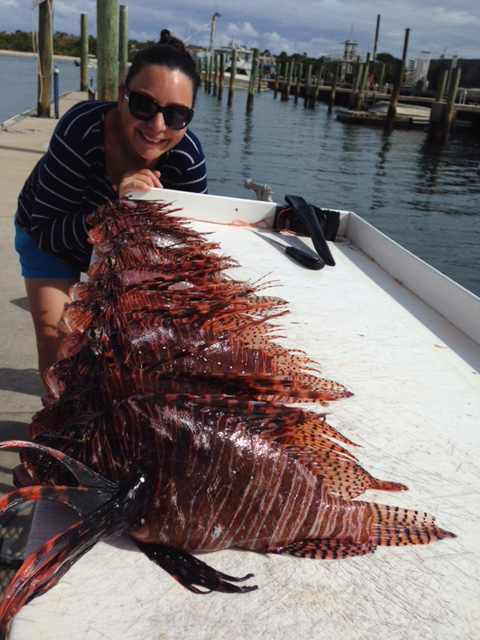Weather windows dictate diving in January, and timing is everything. Calm seas may only last a day or two between fronts and divers are wise to have tanks filled in advance to take advantage of favorable conditions. Wind swells associated with cold fronts make for sloppy seas topside but have minimal effect on visibility beneath the surface, especially in deeper water. Provided large groundswells and heavy rains stay away, visibility offshore is quite good on sites such as the Six-Mile Reef, David-T or the Evans Crary bridge rubble.
As the new year gets underway, hunters have a few fishing regulations to pay attention to. As of January 1st, grouper season closes, while lobster season remains open through the end of March. Additionally, several important changes have been approved for hogfish harvest in state and federal waters, although it’s unclear exactly when they will take effect. Changes for Atlantic waters include: reduced bag limit from five to one per person, a new 16-inch minimum (previously 12-inch) and a new May 1st to October 31 harvest season. Although currently not in effect, divers are wise to pay attention as to when these new changes will be implemented. Early 2017 appears to be the best estimate. For more information on fishing regulations, click here.
Although the changes that are taking place to hogfish are generally considered a good idea to preserve the species for future generations, it can be challenging to find fresh fish for dinner this time of year. Many divers are turning to the invasive lionfish as a great option for fish tacos since they are excellent table fare and quite abundant on area reefs. A simple pole spear with a three-prong paralyzer tip is the preferred harvest method and allows for dozens to be taken on a single dive. Once speared, a puncture resistant vinyl or hard-sided collection device, like the ZooKeeper, are great, safe ways to handle lionfish while transporting them to the surface.
Other interesting creatures can be found roaming reefs this time of year. Sharks will keep divers on their toes as they migrate past local waters. Lemon sharks congregate on area reefs in large numbers each year between the months of December and April to reproduce and witnessing these events are considered by many to be a must-dive this time of year. This can be quite a spectacle as 20 to 30 individuals in one area have been commonly reported in years past. Local dive operators run special trips this time of year to witness these aggregations that are found nowhere else in the world. Other species, such as sand tiger sharks usually common off the Carolinas, have been found offshore on the Treasure Coast this time of year too, presumably forced south due to cooler water temperatures. Be sure to take advantage of the annual lemon shark aggregations before they are gone!
FORECAST BY: Steve Wood
Deep Six Watersports – Stuart
(772) 288-3999 Stuart
(772) 562-2883 Vero
Email: Steve.wood@deepsix.com
Website: www.deepsixintl.com





